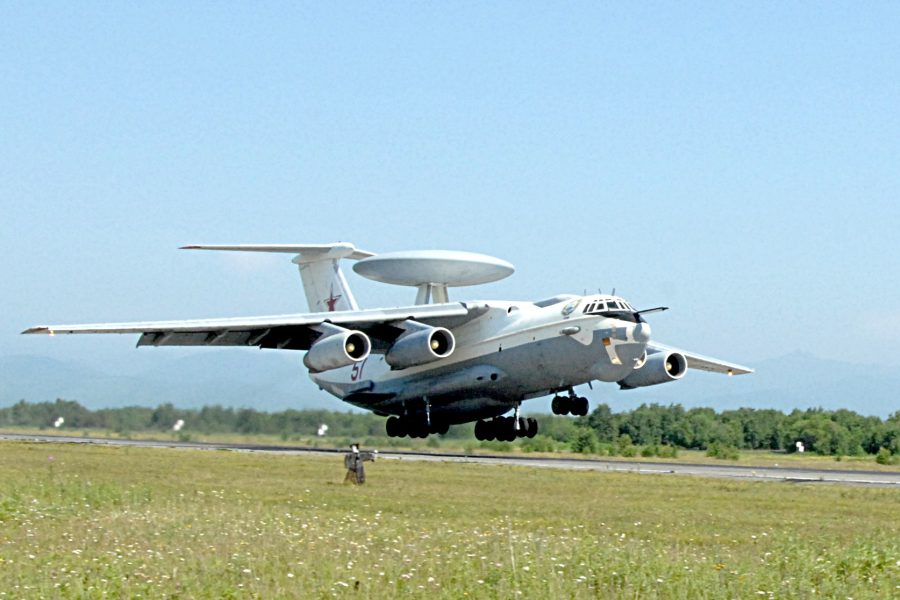The Russian air force has lost just one-tenth of its fleet while many of its military capabilities remain largely unaffected after more than two years of war in Ukraine, the top U.S. commander in Europe told Congress on April 10.
“We do not see significant losses in the air domain, especially their long-range and strategic aviation fleets,” Army Gen. Christopher G. Cavoli, the head of U.S. European Command and NATO’s Supreme Allied Commander, said during a House Armed Services Committee hearing.
“Russia’s strategic forces, long-range aviation, cyber capabilities, space capabilities, and capabilities in the electromagnetic spectrum have lost no capacity at all. The air force has lost some aircraft, but only about 10 percent of their fleet,” Cavoli added in his written testimony to the committee.
There is no question that Russia’s invasion of Ukraine has come at an enormous cost in blood and treasure. Russia has lost more than 2,000 tanks and suffered 315,000 casualties in the conflict, Cavoli testified. The full-scale invasion has cost Russia $211 billion to equip, deploy, maintain, and sustain its forces in Ukraine, added Celeste Wallander, the assistant secretary of defense for international security affairs.
But Russia’s efforts to rebuild its military and the Kremlin’s decision to acquire drones from Iran and ballistic missiles from North Korea have boosted Moscow’s fortunes on the battlefield.
“Russia launches very large-scale attacks every few days keeping with their production rate,” Cavoli said of Russia’s aerial barrages. “They produce, they save up, they launch a big attack.”
In the short term, Russia has sought to gain the edge in Ukraine in what has become a battle of attrition, though the Russians’ ability to integrate air, land, and sea capabilities also has its limitations. As U.S. military aid for Kyiv has remained stalled in the U.S. Congress, Russia is using one-way attack drones and long-range missiles to try to overwhelm Ukraine’s air defenses. The Russians are currently firing five times as many artillery shells as Ukraine, and Moscow’s advantage will grow without fresh military supplies from the U.S.
“That will immediately go to 10-1 in a matter of weeks,” Cavoli said. “We are not talking hypothetically.”
In the long term, Russia is striving to develop its global capabilities. Russia has poured resources into its nuclear forces. It is also looking to expand its conventional ground forces in the years ahead. To do so, Russia has raised the upper age for conscription from 27 to 30, which has enlarged the pool of potential conscripts by 2 million. It is also planning to restructure ground forces so that it can deploy new formations in Ukraine and opposite Finland, Cavoli told lawmakers.
“Russia is reconstituting that force far faster than our initial estimates suggested,” Cavoli said. “The army is actually now larger—by 15 percent—than it was when it invaded Ukraine.”
While Russia’s navy has suffered significant losses in the Black Sea, the rest of its naval forces are intact and its worldwide naval activity is at a peak, the NATO commander added.
Ukraine has achieved some success against Russia’s air force, known as the VKS, including taking down at least two of Russia’s A-50 Mainstay command and control aircraft.
But Russian aircraft have generally adapted by staying out of the engagement zone for Ukraine’s air defenses, many of which have been Western-provided. U.S.-made F-16s, which will provide greater capability for the Ukrainian air force, are months away. Relying on standoff weapons, Russian bombers have stayed clear of Ukrainian air defenses. When Russian warplanes have ventured into Ukraine’s airspace, they adjusted their tactics—and so has Ukraine.
“What we saw at the beginning of the war were if they got within range of those surface-to-air missiles, they got shot down on both sides,” a senior U.S. defense official told Air & Space Forces Magazine in February. That changed soon after the invasion.
“Instead of coming from high altitude where the surface-to-air missile can see you and then shoot long-range shots, they’ll come in at low altitude, where now they can’t see it because of the curvature of the earth, then come out of low altitude, jump up, drop their bombs, and go out right away,” the defense official added. “They weren’t doing that at the beginning, but that’s obviously a lesson that they learned.”
